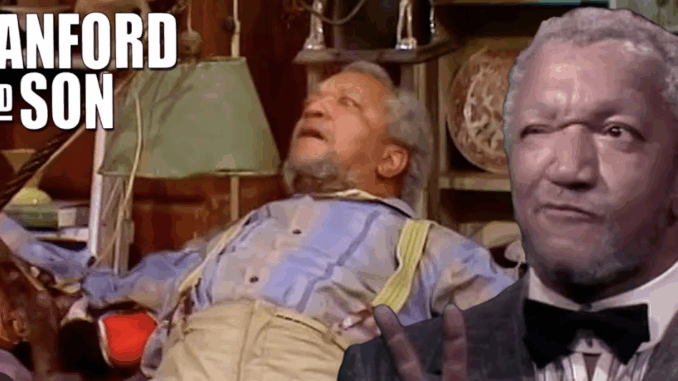
While many remember Sanford and Son for its boisterous humor and Redd Foxx’s iconic pronouncements, the show’s enduring legacy extends far beyond the laughs. This groundbreaking sitcom, which aired for six seasons in the 1970s, offered a nuanced portrayal of a Black family navigating life in urban America, tackling social issues with a comedic touch that was both revolutionary and relatable.
Set against the backdrop of a Los Angeles junkyard, the show centered on the complex and often hilarious relationship between Fred Sanford, a widowed junk dealer with a penchant for outlandish schemes, and his adult son Lamont, who yearned for a life beyond the scrap metal. This central dynamic, fueled by generational differences and contrasting ambitions, provided a rich foundation for comedic storytelling.
However, Sanford and Son was more than just a father-son comedy. It offered a rare glimpse into the everyday lives of a Black family on primetime television. While the humor was paramount, the show subtly addressed issues of race, class, and aging with a level of honesty and realism that was groundbreaking for its time. Episodes often touched upon the challenges of poverty, the sting of prejudice, and the dreams and frustrations of working-class Americans.
Redd Foxx’s portrayal of Fred Sanford was a masterclass in comedic acting. He imbued the character with a curmudgeonly charm, a theatrical flair for the dramatic (often feigning heart attacks with the memorable cry, “Oh, my heart!”), and a deep-seated love for his son, however much he might exasperate him. Demond Wilson’s Lamont served as the perfect foil, his exasperated reactions and aspirations for a better life grounding the show’s often-absurd situations.
The supporting cast further enriched the show’s tapestry. Aunt Esther, Fred’s Bible-toting and fiercely opinionated sister-in-law, provided a constant source of comedic conflict and unforgettable insults (“Watch it, fish-eyes!”). Characters like Grady, Rollo, and Bubba added layers of humor and community to the Sanford household and the surrounding neighborhood.
Sanford and Son‘s success was significant. It not only garnered high ratings but also paved the way for more diverse representation on television. By centering the narrative around a Black family and their experiences, the show broadened the landscape of American sitcoms and demonstrated the universal appeal of well-told stories featuring relatable characters.

Beyond its social significance, Sanford and Son remains a beloved classic due to its timeless humor and the genuine warmth at the heart of the Sanford family. Despite their constant bickering and Fred’s often-questionable behavior, the underlying love and loyalty between father and son resonated with audiences. The show’s ability to find humor in everyday struggles and to portray a Black family with both comedic brilliance and genuine humanity is why Sanford and Son continues to entertain and matter to new generations of viewers. It’s a reminder that laughter can be a powerful tool for understanding and connection, and that even in a junkyard, there can be found a wealth of heart and humor.
